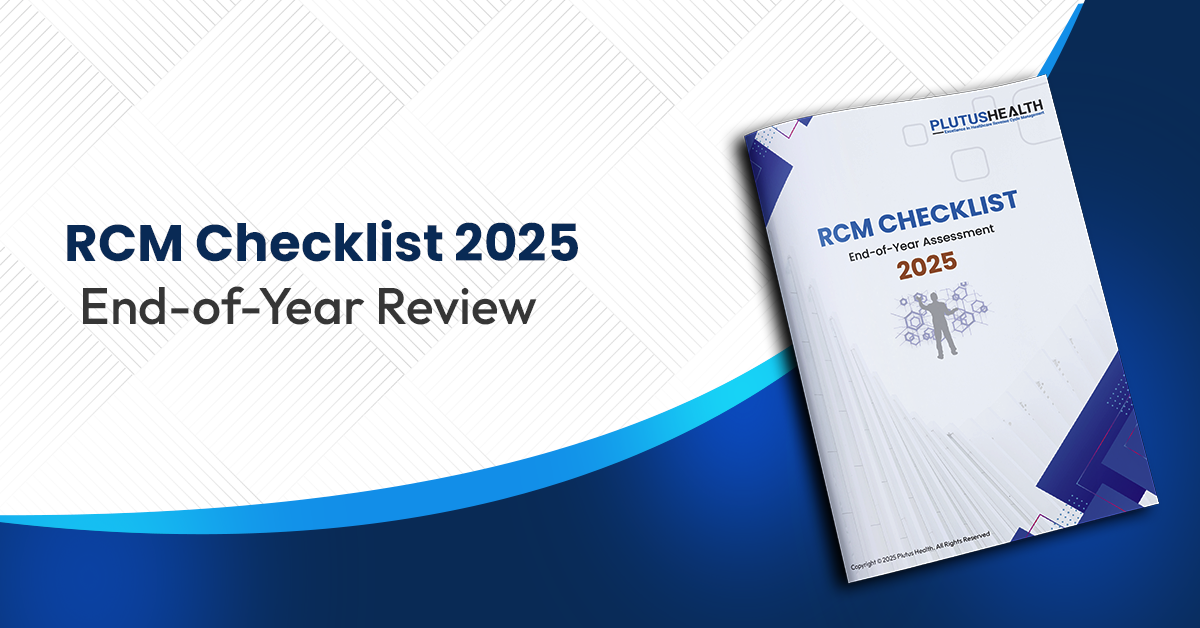Where is medical billing headed in 2022
Hospital operating margins were 42.4% lower in February 2022 than in February 2020 from just before the pandemic struck. This figure, unfortunately, is representative of a longer negative trend. Covid variant surges, supply issues, and labor shortages have consistently damaged revenue over the past two years. Healthcare professionals expect margins to remain slim for some time.
To combat this financial downswing, savvy clinics are adopting new billing strategies. Previous billing habits are proving inadequate to handle modern monetary pressures. As such, healthcare facilities must seek out long-term solutions.
Here’s where Medical Billing is headed in 2022.
Prepayment Reviews
Private insurance payers are expected to increase their focus on prepayment review of claims. Medicare has adopted this process for years and has seen a significant reduction in false claims.
Practices should expect each claim they submit to receive an extensive review. Insurers are investing in training and technology that excels at finding errors. As such, the level of accuracy Payers expect will only increase.
Virtual Care Delivery
An increasingly tech-savvy population and increased isolation have boosted the virtual care market. Even the aging Medicare demographic is showing technological adaptability.
CMS has place of service (POS) requirements for billing. Many private insurers are also adopting POS distinctions in their health codes. Coders must learn to communicate care delivered in a patient’s home via telehealth versus care provided from a medical clinic.
Specialized Billing Units
Specialization is becoming more desirable. Operations run smoother when an expert oversees a specific job within those operations. Forming a group of specialists who cooperate on just the billing tasks is the most efficient way to handle medical billing.
Medical Billing Technology Improvements
The increasingly stringent standards private insurers will apply to claims means relying just on human review is unwise. Computer-assisted coding (CAC) are systems that help coders identify the most relevant code and match it with the appropriate service.
Artificial intelligence has reached the point where it can create an accurate claim with limited input from humans. Recent technological improvements allow these systems to consistently identify nuances most human reviewers would miss. Machine Learning (ML) also makes these systems to learn from patterns from Denials and apply that to billing new claims.
Additionally, systems can review a claim according to pre-set standards before submission. Adopting new technology and automation is critical in forging a more efficient financial system.
Higher EHR Distribution
Electronic health record (EHR) distribution has become increasingly widespread since 2009. These systems store patient medical information on a secure online platform. Clinics with can instantly access this information from anywhere securely and send it to the Payers on request.
EHR dissemination makes for quicker, more accurate scheduling. This efficiency trickles down to billing, by eliminating the need to reconfirm patient demographic details including latest Insurance.
Increase in Job Expectations
In 2022 and beyond, medical billers will be expected to perform at higher levels than previously. The increase in private insurer standards means that inexperienced workers are less viable, since they cannot meet the new demanding standards. As such, practices will need to increase their criteria for hiring billers. Unfortunately, the number of top applicants for billing jobs has failed to meet this rising demand and the per hour costs have gone up considerably.
For practices that can't find appropriate billers, consider hiring a professional billing service.
Plutus Health maintains specialized staff who consistently stay abreast of healthcare requirements. We quickly secure reimbursements that capitalize on the services you have delivered to patients. Learn more about our services by contacting a representative today.
Key Takeaways
1. Private insurers are adopting more extensive claim reviewing techniques.
2. Billers must distinguish between in-office care and virtual care.
3. Specialized units are an increasingly necessary strategy.
4. Medical technology can produce and review accurate claims.
5. Expectations are rising for billers and coders.
Liked the blog? Share it
FAQs


ABA providers are grappling with high staff turnover (up to 65%), rising burnout, administrative overload, and stagnant reimbursement rates. These challenges directly impact care continuity, clinical outcomes, and operational performance.


Operational inefficiency costs ABA teams up to 10 hours per staff member per week, contributing to burnout, denied claims, and longer accounts receivable (A/R) cycles. These inefficiencies ultimately result in reduced revenue and patient dissatisfaction.


Burnout leads to costly turnover, lower client retention, and decreased productivity. Recruiting and replacing a BCBA or RBT can cost up to $5,000 per hire, plus months of lost revenue and disruption to morale.


High-performing ABA organizations invest in clear career pathways for BCBAs and RBTs, align compensation with market benchmarks, and foster peer-led mentorship, flexible schedules, and wellness programs.


Automation tools like Plutus Health's Zeus streamline eligibility verification, denial management, and billing, reducing manual workloads by 5–10 hours weekly per clinician and improving clean claim rates by 95%.


Outsourcing revenue cycle management can improve collections, reduce denials by up to 30%, and free clinicians from billing-related admin tasks, resulting in better client care and financial outcomes.


One $200 million ABA network partnered with Plutus Health to automate eligibility and accounts receivable (A/R) processes. The result: $2M reduction in legacy A/R and a 97% Net Collection Rate.


By improving operational efficiency, investing in technology, and ensuring workforce stability, ABA leaders can align outcomes with reimbursement. Plutus Health supports this transition with scalable RCM and automation strategies.
FAQs


ABA therapy billing is the process of submitting claims to insurance or Medicaid for Applied Behavior Analysis services provided to individuals with autism or developmental disorders. It includes using correct CPT codes, proper documentation, and adherence to payer-specific policies.


Common CPT codes for ABA therapy in 2025 include:
- 97151 – Assessment and treatment planning
- 97153 – Direct therapy with the patient
- 97155 – Supervision and modification of behavior plan
- 97156 – Family adaptive training
- Always check with payers for any annual changes.


To bill Medicaid for ABA services, providers must ensure credentialing is complete, services are pre-authorized, and claims use the correct codes and modifiers. Medicaid requirements vary by state, so always follow state-specific billing rules.


Common ABA billing mistakes include:
- Incorrect or missing CPT codesplan
- Lack of documentation or treatment
- Uncredentialed providers rendering services
- Submitting duplicate or late claims


Without proper credentialing, providers can’t get reimbursed. Insurance and Medicaid require that BCBAs, RBTs, and organizations are credentialed and contracted. Delays in credentialing often cause revenue losses and claim rejections.
FAQs


CMS proposes a 2.4% increase in Medicare ASC payment rates, contingent on meeting ASCQR quality reporting requirements. Plutus Health helps ASCs meet these compliance benchmarks by integrating quality reporting data into RCM workflows, ensuring eligibility for full payment updates.


The ASC Covered Procedures List will expand by 547 procedures, including cardiology, spine, and vascular surgeries. Plutus Health supports expansion into new service lines by customizing RCM processes for high-acuity procedures, minimizing claim denials during the transition.


Site-neutrality narrows the payment gap with hospital outpatient departments, enhancing ASCs' cost-efficiency appeal. Plutus Health helps leverage this advantage in payer negotiations by providing performance dashboards and cost-justification analytics to secure stronger reimbursement terms.


Complex procedures increase denial risk and slow cash flow. Plutus Health's automation-first RCM model delivers 95%+ clean claim rates, reduces A/R days, and safeguards margins, even as your case mix becomes more complex.
FAQs


A hybrid RCM model combines in-house tasks like scheduling, intake, and patient communication with outsourced billing support for claims, denials, and A/R follow-up. Plutus Health enables this model with automation and expert teams.


Frequent CPT code updates, variable session lengths, high no-show rates, and sensitivity around patient collections make behavioral health billing uniquely challenging. Hybrid RCM helps strike a balance between compliance and patient care.


Tasks requiring patient interaction—like intake, eligibility checks, copay collection, and documentation—are best kept in-house, while backend processes can be outsourced.


Outsourcing denial management, claims scrubbing, and payment posting improves clean claim rates, reduces A/R days, and scales capacity without adding staff.


Plutus Health delivers 97%+ clean claim rates, AI-powered denial prediction, and 48-hour claim turnaround. Our hybrid RCM solutions provide behavioral health CFOs with visibility and control, while enhancing financial performance.
FAQs


Payment complexity, high out-of-pocket costs, increasing denials, and value-based care requirements are pushing providers toward more transparent, tech-supported payment systems.


Patients now act like consumers. They expect clear cost estimates, simple bills, digital payment options, and flexible financing.


AI, automation, and digital tools streamline estimates, reduce denials, support payment plans, and allow faster collections through mobile and online payments.


Complex billing questions, insurance confusion, and financial stress require a compassionate approach. Advocates guide patients and protect trust in clinical care.


Plutus Health supports providers with AI-driven denial prevention, predictive analytics, digital payment tools, patient financing, and a seamless platform, such as AnodynePay.















































